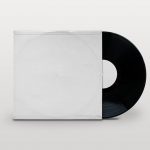Space
What you leave out is as important as what you put in to a song.
In composition, there are two forms of empty, of space. There is the space between events and there are the holes in the wall of sound. Neither of these may apply to some genres. Heavy metal, for example, rarely has any space in it at all. Even when Metallica plays “softly” for them, the air is impenetrable. Ceiling to floor, wall to wall sound is what made a lot of classic rock, well, classic.
But good blues men and old cosmic cowboys know both forms of space and can exploit them for the emotional pull they provide.
Let’s start with B.B. King. The following outtake from his classic The Thrill is Gone shows how even though his band is filling up the space under him, he leaves plenty of space between notes. The long and dramatic pauses create the sensation of emptiness, which given the song’s title and theme is the right direction to drag the listener’s ear.
The other form of space involves getting the band to not saturate the air with sound. One reason why some stripped-down blues bands – a drummer, a bass man and an axe grinder – work well is that their music feels like there are gaps between the instruments. Reaching this sound is part composition (not playing like you are paid by the note) and also in the mix, isolating various instruments to more narrow frequency ranges (one fellow I know uses multiband compressors and a bit of EQ to drop out parts of rhythm guitars, organs, and any other instrument that tends to play continuously).
This next clip is from Ray Wylie Hubbard’s Purgatory Road, a song I have butchered a few times on stage. This tune is truly stripped down – except the instrumental midsection – sounds haunted due to all the space between each instrument.
Songwriters often do not appreciate the space they should give their music. We are absorbed in the lyrics, the story telling. But the music tells much of the story, and like a person who is shying away from discussing something, the space in their sound tells plenty.




